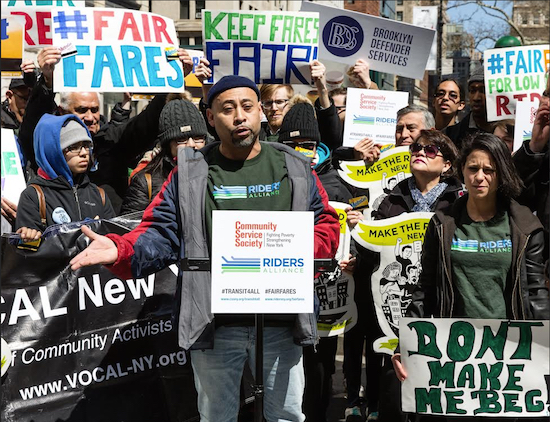Advocates seek half-fare Metrocards for low-income riders

On the heels of a shocking new report showing that one in four low-income New Yorkers cannot afford to use public transportation, two groups, the Community Service Society of New York and the Riders Alliance, announced the start of a “Fair Fares” campaign to obtain half-fare MetroCards for the city’s working poor.
The campaign was launched at a rally outside City Hall on April 10 in which transportation advocates called for Mayor Bill de Blasio and the City Council to create a program that would allow riders below the poverty level to buy half-fare MetroCards.
The two organizations have organized an online petition drive and are urging riders to sign the petition. The petition can be found at www.ridersny.org/fairfares and at www.cssny.org/transit4all.
